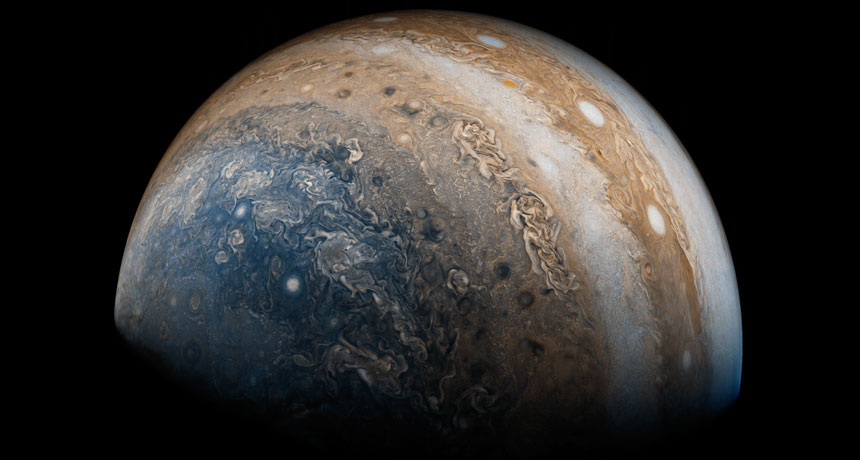Juno spacecraft reveals a more complex Jupiter
Stronger magnetic field, diffuse core and other surprises appear in data from first flyby

LOOKING UP Data from NASA's Juno spacecraft are revealing new details of Jupiter, from the swirling cyclones at the planet's poles (south pole, shown) to its great white ovals, storms and stripes of gas.
NASA, SWRI, MSSS